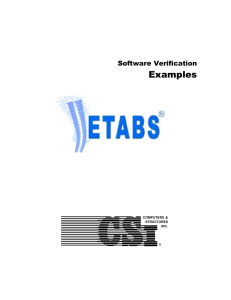
The equivalent static analysis procedure is essentially an elastic design technique.

Some of them used in the project are-Įquivalent Static Analysis II. There are different types of earthquake analysis methods. It is a part of structural analysis and a part of structural design where earthquake is prevalent. In the past the buildings were designed just for gravity loads and seismic analysis is a recent development. Seismic analysis is a major tool in earthquake engineering which is used to understand the response of buildings due to seismic excitations in a simpler manner. In such cases, even if earthquake forces have not been considered precisely, the structures would have adequate in-built strength and ductility to withstand some level of earthquake intensity. Reinforced Concrete Multi-Storied buildings (RCMS) are supposed to be of engineered construction in the sense that they might have been analyzed and designed to meet the provisions of the relevant codes of practice and building bye-laws the construction might have been supervised by trained persons. It is also likely that a structure may not be subjected to severe earthquake forces during its design lifetime. There are many situations where available database, codes/standards and analytical methods cannot be used to estimates the wind pressure coefficients and wind loads on the claddings and supporting system of buildings, for example, the aerodynamic shape of the building is uncommon.Įarthquakes are occasional forces on structures that may occur rarely during the lifetime of buildings. Wind pressures on buildings are influenced by the building geometry, angle of wind incidence, surroundings and wind flow characteristics. Wind, in general, has two main effects on tall buildings: First, it exerts forces and moments on the structure and its cladding, and second, it distributes air in and around the building, mainly termed as wind pressure. It involves various fields such as (i) Fluid dynamics (ii) Probability and statistics and (iii) Structural dynamics.

Wind engineering requires a multifaceted approach to provide solutions to various wind-sensitive problems. In India, in recent decades, the application of wind engineering to civil engineering structures has become popular and the state-of-the-art has improved considerably.

Key words:-Aspect ratio,, Earthquake forces, ETABS, Wind load etc. These thesis study the different cases of aspect ratio of the building and effect of wind and earthquake forces on building. It has been proved that the aspect ratio of building affects the effect of wind and earthquake forces on building. The structural systems of high rise buildings are usually sensitive to the effects of wind& earthquake, the wind-earthquake-structure interactions and then determines the wind loads& earthquake loads as equivalent static loads. Head of Department, Civil EngineeringĪbstractThe rapid increase of the urban population in developing countries such as India, has forced the revaluation of the importance of high rise buildings with different size and shape which leads to different aspect ratio of the buildings. Effect of Wind and Earthquake Force on Different Aspect Ratio of Building


 0 kommentar(er)
0 kommentar(er)
